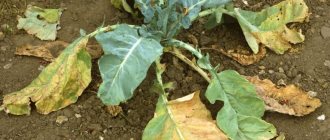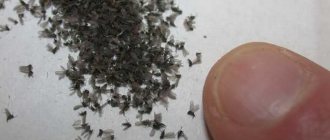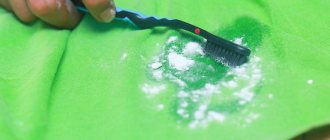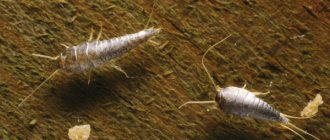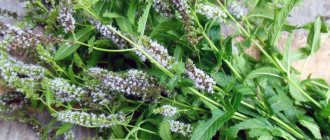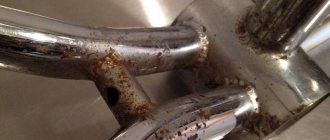The ground rat is a large field mouse, a small fluffy animal. The body length of the rodent can be up to 25 cm in length, and the weight ranges between 500 g. The most common are brown-black, but their color can be pure black, gray, brown, with a white stripe on the back. They do not create such a repulsive impression as ordinary rats, but if one of them gets into the garden or outbuildings, then serious damage to the household can be caused. The ground rat is often called the water rat; how to get rid of it is a popular question among gardeners and gardeners.
Description and features of the earth rat
The ground (water) rat or water vole is a rodent belonging to the hamster family. Main characteristics:
- body size from 11 to 26 cm;
- weight from 120 to 380 g;
- the length of the tail is from half to two thirds of the length of the body.
At first glance, the earth rat looks like an ordinary one, but has a more rounded body, a shortened blunt muzzle, and shorter legs. The eyes and ears of an earthen rat are smaller than those of a normal rat, and its incisors are brownish-yellow. The fur is soft, thick, and the color ranges from dark brown to almost black.
Earth rat
Lifestyle
Ground rats spend most of their lives underground. At a depth of 10 to 40 cm, they dig a complex and fairly extensive system of passages that connect a nest made of twigs, sticks, grass, pieces of paper and fabric, several pantries for storing supplies and numerous exits to the surface.
These animals are mainly nocturnal. With the onset of darkness, rodents come to the surface and go in search of food, trying not to stray far from the entrance to the hole. During the day they rest in the nest or dig new tunnels.
Digging holes in the ground, rodents destroy everything in their path - the roots of herbaceous plants, trees and shrubs, root crops, and bulbs suffer from the teeth of pests. Earth rats swim well and climb trees deftly. They don't hibernate. They spend the cold season underground, closing the burrow entrances and feeding on reserves.
Diet
Ground rats that have settled on a personal plot pose a serious threat to all plants. This is explained by the fact that the rodent eats plant foods, and its diet is very varied. Water voles gnaw at the roots of garden plants, eat root vegetables, eat the bark of trees and shrubs, and gnaw on succulent stems. In addition, earth rats can hunt insects, small rodents, fish and crayfish, climb into bird nests, eat eggs and even attack chicks.
Living next to humans, rats eat food waste, as well as supplies of vegetables and grains stored in sheds and cellars.
Habitat
The habitat of ground rats is quite wide. Rodents are found throughout almost the entire territory of Russia with the exception of the Far North, in Belarus, Ukraine, the Baltic countries, Kazakhstan, the northern regions of Mongolia, northwest China, and the countries of Central and Eastern Europe.
Most often, ground rats live along the banks of bodies of water (rivers, ponds and lakes), but often move to fields and meadows, to vegetable gardens and orchards with fruit trees. Most often, such movements are caused by high waters and floods, early frosts or lack of food.
Appearance of the animal
The appearance of the animal is more similar to mice than to rats:
- rounded body, large head with a blunt muzzle;
- small round ears, barely noticeable;
- the eyes are round and large enough;
- massive paws with long toes and slightly rounded claws.
There are still differences between rats and mice. The rodent's body length is about 22 cm. The tail is narrow, long, covered with thick, hard hair. There is a small brush at the tip. The coat is soft, but there are long, stiff fibers throughout the body. In winter, the cover becomes denser and fluffier. The weight of the animal is about 350 g.
On a note!
The color of the ground rat depends on its habitat and age. The back is always darker than the sides. Mainly brown with tints of different tones of brown.
The abdomen is dirty white. Available in red or completely black. The yellow earthen rat looks like a hamster. The only thing that gives it away is its long tail and the absence of a light stripe along the back. A photo of an earthen rat is presented below.
Earth rat
Why do earth rats appear?
There are several main reasons why there are rats in a summer cottage. The first is the abundance of food, which allows rodents not only to eat plenty, but also to stock up for the winter. The second reason for the appearance of earth rats in the countryside is the large number of places suitable for constructing a convenient and safe shelter.
Rat "gang"
Rodents make nests in cellars and basements, sheds and outbuildings, and also actively inhabit tunnels previously dug by moles and shrews.
Why are they dangerous?
Earth rats cause serious damage to agricultural plants. By digging underground passages, rodents damage the root system of plants, which leads to their drying out and death, and in the case of fruit trees and shrubs, to loss of harvest. In addition, rodents gnaw bark from trees, causing serious harm to them.
Earth rats gnaw large root crops, and carry small ones into holes for storage. They love to feast on melons and melons. Due to damage caused by the sharp teeth of rodents, melons and watermelons quickly become unusable.
If there is not enough food in the garden, rats enter where vegetables and grain are stored and eat the supplies. They can also get into houses where they feed on food. The appearance of rats is dangerous for people, since animals carry pathogens of severe infectious diseases (plague, leptospirosis, tularemia).
Habitats
The ground rat can be found in the central part of the country, the southern regions of Siberia, the Caucasus and Central Asia. The Far North is unfavorable due to very low temperatures and lack of sufficient nutrition. Wet lowlands along the banks of reservoirs, areas around swamps and damp meadows are the most favorite places for rodents to live. Too many breeding animals force them to settle in fields, orchards and vegetable gardens. During river floods, they move to drier and more suitable places to live.
Getting rid of earth rats
The sooner the fight against voles on the site is started, the faster the pests will be dealt with, which means the greater the chance of saving the plants.
You can get rid of earth rats in the garden in the following ways:
- pesticide;
- traps;
- scaring away
You can use natural enemies of rodents, as well as use folk remedies.
Biological method of control
Cats or dogs can help people get rid of earth rats. It is best that these are adult animals that can hunt rodents, for example, rat-catching cats, dachshunds or terriers. A spoiled pet, of course, will not chase rats, but its presence can also be useful - there is a possibility that the rodents will be scared away by the smell of a cat or dog.
A cat or dog permanently living in the country will help both remove rodents and protect the area from their return.
Repellent
When deciding how to drive a rat out of the area, you should pay attention to special devices - ultrasonic repellers. They generate ultrasonic waves that people cannot hear, but they have a negative effect on rodents, causing anxiety and fear. The devices are easy to use, safe for people, but have several disadvantages.
- Firstly, they act not only on rodents, but also on pets.
- Secondly, the rats gradually get used to it and stop paying attention to the signals.
- Thirdly, according to many users, the effectiveness of such devices is greatly exaggerated.
Repeller
Plants
The most environmentally friendly way to drive rats out of your area is to plant plants whose smell rodents cannot stand. Planting black elderberry will be the most effective. Not only does its smell repel rats and mice, but the roots of the plant also release cyanide into the soil, which has a detrimental effect on rodents. In addition to elderberry, rats are repelled by the aroma of mint, tansy, and wormwood.
Destruction by toxic substances
Some summer residents prefer to use radical measures to combat earth rats - poisons. There are a large number of chemicals that can be used to kill mice, rats, and moles.
We must remember that using toxic substances to poison rodents must be done with great caution. It is necessary to observe safety precautions and act strictly according to the instructions.
Even with the help of poison, getting rid of rats will not be so easy, since rodents quickly adapt to the poison. To be sure to kill voles, it is necessary to change the drug from time to time.
Using traps
Traps are one of the most popular means of rodent control. Models such as:
- adhesive;
- trap;
- electric.
The main problem is where to put the caught animals.
Flooding of holes
Ground rats are excellent swimmers. But they will not live in wet soil and flooded burrows. So if you fill the rat tunnels by running water under pressure through a hose, then there will be no rodents left in your summer cottage.
Smoking
Another way to get rid of earth rats in the garden is to place smoldering scraps of fur or skins in all discovered exits from holes. Rodents cannot stand the smell of burning fur and will try to leave their home as quickly as possible.
Folk remedies
Many people prefer to fight rats using folk remedies. The most popular method is to place rags soaked in strong-smelling substances - gasoline, kerosene, grease - at the entrances to burrows. Homemade traps are also used.
Useful tips
Professional products for fighting the rat family are produced in different variations. You can offer poison-treated grain to pests, or use gel bait. It contains a potent poison, flavorings to attract the attention of animals, and flavoring additives. It must be placed near the minks.
If the animal dies in a hole, there is nothing to worry about; on the surface, it must be buried so that birds and neighbor cats do not get hurt.
With the constant invasion of voles in gardens, it is necessary to ensure the tightness of the area. Build a fence around it with a cemented base. The animal will not be able to make moves in the cement.
How to distinguish rat holes from mole holes?
You can detect the presence of earth rats by the presence of holes in the garden. But besides water voles, burrows can also belong to other animals. Most often, you can find passages in the ground made by moles. Understanding who exactly is digging the ground is not so difficult. At the exit from the wormhole, the earth lies in a triangular mound, and near the exit from the rat’s home there is a flat mound. In addition, unlike a mole, a vole disguises its exit with leaves, twigs and debris.
Rat hole
Reproduction
Reproduction of the ground rat Females reach sexual activity at the age of 5 months.
They breed all year round. Over the entire season, the rat gives birth to 3 litters of up to 10 cubs each. Already 18 hours after the birth of the pups, the rats are again ready for fertilization. Pregnancy lasts about 25 days. The female raises the cubs for about a month. Cubs are born blind, deaf, toothless, and naked. After 2 weeks, the eyes open, hearing appears, and teeth begin to emerge. After 30 days, the younger generation is expelled. Each representative digs his own hole.
Preventive measures
The following preventive measures will help prevent the appearance of earth rats on the site:
- timely weeding, removal of plant debris (fallen leaves, rotten fruits, dead wood);
- keeping the area clean (there should be no garbage or food waste);
- deep digging of beds and row spacing in the fall after harvesting;
- regular inspection of the area for the presence of burrows;
- the compost pit should be equipped in the far corner of the site, away from the beds.
When harvesting, it is very important to check that there are no root crops left in the ground, and that there are no remains of herbs and vegetables in the beds. A cat or dog periodically walking around the area will also help protect against rodents.
Cardinal remedies
Since rats are distinguished by their intellectual abilities, in order to get rid of them, it is necessary to resort to various methods:
- mousetraps;
- traps;
- traps;
- toxic substances;
- bait with poison.
Regular mousetraps can only be used once. If a rodent notices that another animal has fallen into a mousetrap, it will not come close to it. Mousetraps and traps are placed in the rat's hole in such a way that it is sure to fall into them: the hole is dug up a little, a trap is placed in it, and the top is covered with earth.
There are four types of traps:
- adhesive;
- catch cylinders;
- electric traps-repellents;
- mechanical mousetraps.
The pest's hole is not so easy to find. Rats protect their home well from prying eyes, camouflage it by covering it with garbage, branches, and leaves.
Poisonous substances and poison baits are more effective than traps. The poison can be poured directly into the hole. A mixture of poison and grain is also prepared: 30 g of the drug “Ethylphenacin” is mixed with 1 kg of wheat.
